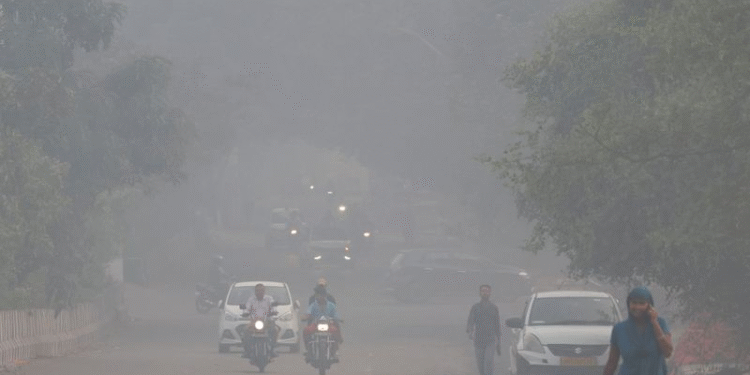Delhi celebrates Diwali under a cloud of toxic air as pollution levels spike into the red zone. Authorities impose curbs to control rising AQI—here’s what you need to know about the restrictions and health risks
As the festival of lights illuminates India, New Delhi finds itself grappling with a grim reality: thick smog, plummeting air quality and emergency pollution controls being thrown into force just ahead of the celebrations. On the eve of Diwali 2025, the capital’s skies are murky, the air heavy—and authorities have triggered the second stage of anti‑pollution curbs as many areas slip into the ‘red’ or ‘very poor’ category of air quality.
1. The Alarming Air Quality Trend
A few key data points:
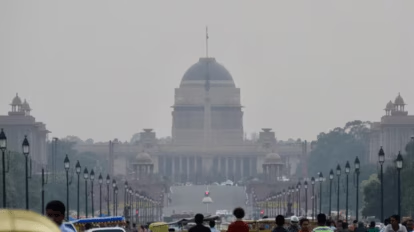
- According to the Central Pollution Control Board (CPCB), several zones in Delhi recorded Air Quality Index (AQI) readings in excess of 300, pushing them into the “very poor” category, and in some cases edging close to or into the “severe” zone.
- On October 17, early‑morning readings showed AQI around 242 in Delhi with localities like Anand Vihar, Wazirpur and Jahangirpuri already registering “very poor” scores.
- By October 18 and 19, nine out of 38 monitoring stations reported “very poor” air, and Delhi’s AQI hit about 268 at 4pm.
- In one striking instance, the station at Anand Vihar recorded an AQI in the range of 430, a “severe” reading that far exceeds the safe threshold.
These figures come as meteorological conditions — low wind speed, clear skies and early winter onset — are contributing to pollutant build‑up rather than dispersion.
2. Curbs and the Activation of GRAP Stage II
In response to this worsening scenario, the Commission for Air Quality Management (CAQM) triggered Stage II of the Graded Response Action Plan (GRAP) for Delhi and its surrounding National Capital Region (NCR). The measures include:
- Immediate enforcement of Stage II, in addition to already ongoing Stage I actions.
- Stricter curbs on construction and demolition activities, mandatory dust‑control measures at worksites.
- Restriction on diesel generator (DG) set usage and ban on entry into Delhi of inter‑state buses unless they are electric, CNG or BS‑VI compliant.
- Increased frequency of public transport (metro, buses) to reduce private vehicle usage.
- Daily mechanical sweeping, water‑sprinkling on major roads, particularly before peak traffic hours, to reduce road‑dust generation.
Officials say implementing GRAP II is an urgent step, given forecasts indicate that conditions (low wind, stable atmosphere) may prevent pollutants from dispersing.
3. Why Now? The Convergence of Festival, Weather & Pollution
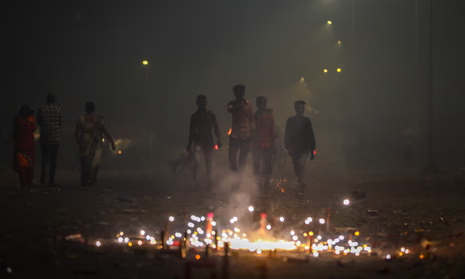
3.1 Seasonal & Meteorological Context
October in Delhi often marks the transition from the monsoon/post‑monsoon phase to the winter pollution season. Key factors now at play:
- Cooler nights and relatively stagnant air layers, meaning pollutants remain trapped close to the surface and accumulate.
- Low wind speeds and clear skies allow particulate matter (PM2.5, PM10) to linger rather than be dispersed.
- With the onset of colder evenings, there is increased biomass burning, heating, and other winter‑linked emissions.
3.2 Festival Factor
Diwali adds a stress factor to this dynamic:
- Use of fireworks (even where restricted) can spike particulate emissions dramatically in a short period. Previous studies of Diwali in Delhi showed PM2.5 concentrations rising by up to 16 times in the hours following the fireworks.
- The Supreme Court has permitted “green” firecrackers in Delhi‑NCR for specified hours, yet many observers fear that enforcement difficulties and weather conditions will combine to create a heavy pollution load.
3.3 Urban Emissions + Dust + Regional Factors
- Vehicle emissions, road‑dust, construction activity and open‑waste burning are perennial contributors; during periods of stagnation their impact is magnified.
- Regional factors such as crop‑residue burning in neighbouring states often exacerbate Delhi’s winter smog problem — though this is more pronounced later in the season.
So, what we have now is a perfect storm: pre‑Diwali activity, poor atmospheric dispersion, and early arrival of winter‑type emissions.
4. Impact on Daily Life & Public Health
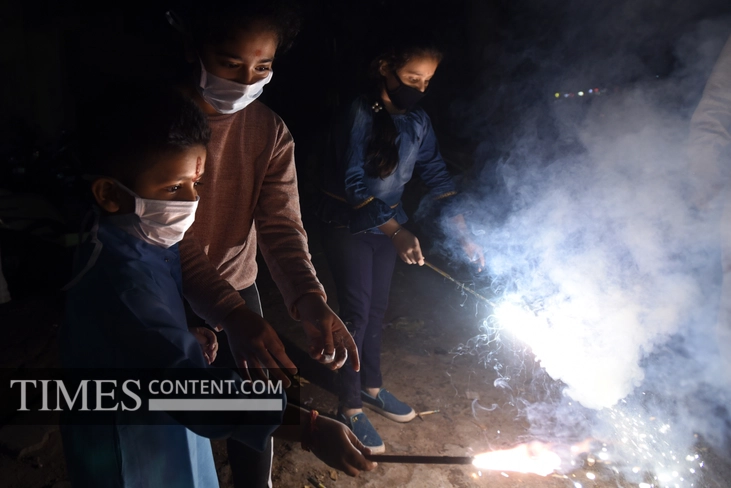
4.1 Health Effects
- Residents have reported throat irritation, burning eyes, cough, and difficulty breathing in park or street settings. Anecdotal reports include:
“I have fever, bodyache, a sore throat and a really bad cold… I’m assuming it’s due to the pollution.”
- Medical sources warn that exposure to high PM2.5 levels is akin to smoking multiple cigarettes a day, and can aggravate asthma, bronchitis, heart‑disease risk and reduce lung function over time.
- Vulnerable groups — children, elderly, pregnant women, those with pre‑existing respiratory/cardiac conditions — are especially at risk.
4.2 Lifestyle / Comfort
- The hazy skies and heavy air reduce visibility and ease of outdoor movement. Many Delhiites are choosing to stay indoors or cut down on outdoor exercise until air improves.
- Schools, workplaces and homes may need to monitor indoor air quality, run purifiers, avoid outdoor breaks in peak hours.
- With fireworks expected tonight, the immediate hours may see sharp spikes in pollution, which may linger into the next morning. Experts warn of “severe” levels if dispersal remains low.
4.3 Economic & Urban Functioning
- Construction activities may face slowdowns or stoppages due to GRAP II.
- Traffic management and public‑transport enhancements may cause short‑term inconvenience but aim for longer‑term relief.
- Air‑quality induced health impacts may increase hospital/emergency demand.
5. What Authorities Are Saying & Doing
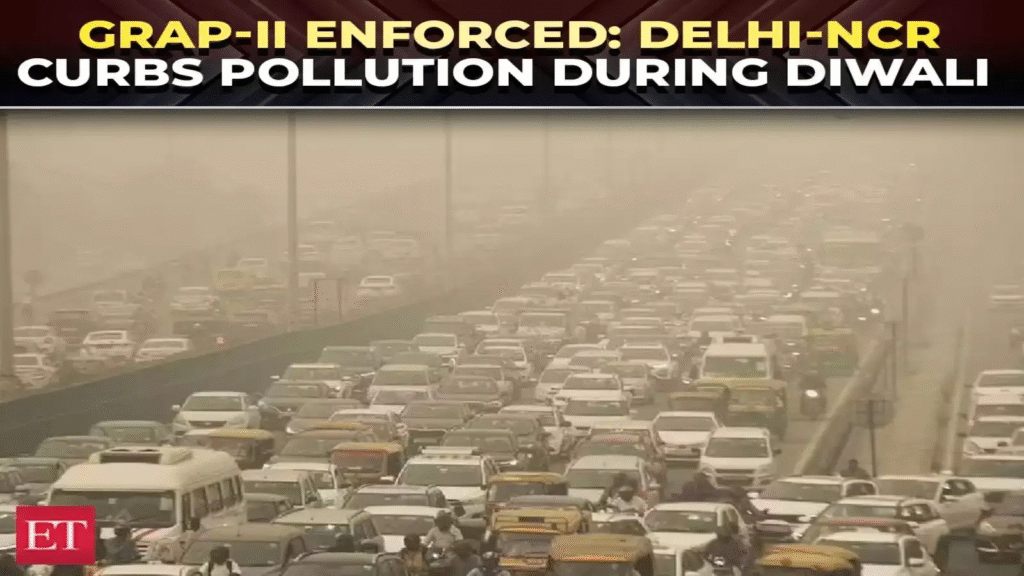
- The Delhi government and regional authorities have issued repeated appeals to use only certified green fireworks, limit bursting to designated slots, and reduce outdoor burning of waste.
- The Delhi municipal corporations have beefed up road‑sweeping teams, anti‑smog gun deployments and waste‑to‑energy treatment of post‑Diwali debris
- Environmental agencies are closely monitoring hot spots and have triggered GRAP II as a preventive step. Officials emphasise that without mitigation, the AQI could cross 400 within 48 hours.
6. What You Can Do — Practical Tips for Residents & Visitors
Here’s how to navigate the situation safely:
- Check latest AQI readings for your area (apps / CPCB website). Avoid outdoor chores when readings exceed ~300.
- Limit outdoor exposure, especially during evening and following a heavy fireworks burst. If you must go out, wear a mask rated N95/KN95 to filter fine particulates.
- Use indoor air filters or purifiers if possible. Keep windows closed during peak pollution hours (evenings, early morning).
- Avoid strenuous exercise outdoors in heavy smog; choose indoor workouts until air improves.
- Reduce personal emissions: Use public transport rather than private car, avoid open waste burning, delay non‑essential driving during high‑pollution hours.
- Minimise fire‑cracker use and choose verified “green crackers” if celebrating outdoors. Consider alternative festivities: diyas, lights, rangoli rather than heavy fireworks.
- For those with health conditions: Keep medications handy, talk to your doctor about reducing exposure and what to do if symptoms worsen.
- At home: Close windows when air is visibly hazy, run fans/purifier, keep an eye on indoor sources of pollution (cooking fumes, incense, candles).
- Stay informed: Weather and meteorological factors matter. If forecast predicts calm winds/stable atmosphere, plan for limited outdoor exposure.
7. Looking Ahead: Why This Matters Beyond One Festival
- The fact that Delhi is slipping into “very poor” or worse zones before the main fire‑cracker night signals a deeper, systemic challenge. Smog isn’t just a one‑day problem.
- Long‑term exposure to poor air quality reduces life expectancy and increases burden of chronic disease.
- With winter approaching — which historically sees Delhi’s air quality dip even further — the city must treat this as more than just a festival‑season event.
- Socially and culturally, how one celebrates a major festival in one of the world’s most polluted capitals also sends a message about environment responsibility and urban living standards.
8. A Word to Podcast Guests, Social‑Media Users & Local Community Groups
If you’re posting on social media or addressing your audience today:
Suggested caption/snippets
- “Diwali lights illuminate Delhi today — but the air feels heavy. AQI in many areas touches 400+ ahead of the festival. Stay safe, stay inside when needed.”
- “Celebration + choking air: Delhi sees GRAP 2 curbs as smog settles in. Green crackers, public transport, masks: your checklist for tonight.”
- “Festive mood, fragile air. Choose diyas & lights this Diwali; the city’s lungs need care as much as our own.”
- “Not just a festival forecast: low winds, dust, pre‑winter cold are combining into a pollution risk for Delhi. Outdoor plans? Time them right.”
9. Final Thoughts
As millions of lights go up across Delhi tonight, the city faces a dual reality: the joy of the festival, and the choking haze of urban air‑pollution. The invocation of GRAP Stage II is a stark indicator—not just that the air is bad, but that the situation is serious.
For each of us who lives, works or visits in Delhi this Diwali, the invitation is two‑fold: celebrate the festival of light, yes—but with awareness, moderation and care. Beyond fireworks, consider the air we breathe, the children playing outside, the elders in our homes.
This Diwali, the hope is that we light up our homes and hearts—but not
Also Read : Mumbai weather updates: City records moderate air quality, hot and humid conditions persist
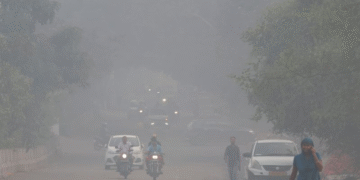














 Categories
Categories
